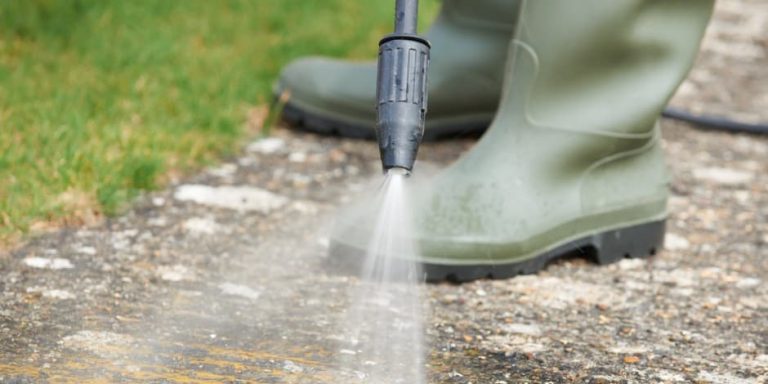
In today’s competitive commercial landscape, appearances matter. From retail plazas and office parks to restaurants and shopping malls, many property managers schedule frequent power washing to maintain a clean and inviting environment. But while sparkling sidewalks and gleaming exteriors may be great for business, they come with a hidden environmental cost—particularly when it comes to urban water table depletion. 💧🏙️
In this article, we’ll uncover how over-washing commercial spaces is quietly lowering water tables in urban areas, contributing to environmental stress, and what steps businesses can take to be more responsible.
💦 What Is the Water Table—and Why Does It Matter?
The water table is the upper surface of groundwater stored in aquifers beneath the earth’s surface. In cities, this underground reservoir helps:
- Supply drinking water through wells
- Maintain hydration of green spaces and parks
- Support the health of nearby rivers and wetlands
- Regulate soil moisture and prevent land subsidence
When the water table drops too low, cities may face:
- Dried-up wells
- Compacted, sinking land
- Declining biodiversity in water-dependent ecosystems
- Increased reliance on external water imports
🚨 In short: the health of the water table directly impacts the sustainability of urban life.
🔁 The Link Between Power Washing and Water Depletion
Power washing isn’t typically seen as a major contributor to water scarcity—but in cities with hundreds of commercial properties, routine over-washing quickly adds up.
Let’s look at the numbers:
- A standard commercial power wash may use 400–600 gallons per job
- Weekly cleanings equal 25,000+ gallons annually per site
- In a city with 1,000 commercial buildings, that’s 25 million gallons per year
That’s enough water to supply 250 households for an entire year. And when this water is drawn from municipal or groundwater sources—and not replenished—it depletes the local water table over time. 🕳️🚰
🚫 Signs of Over-Washing in Urban Areas
You might be over-washing your commercial space if:
- You schedule cleaning weekly or bi-weekly, regardless of need
- You wash entire surfaces instead of spot-cleaning dirty sections
- You use high-pressure methods where soft washing would suffice
- You notice recurring water runoff pooling in nearby drains or walkways
- Your business operates in a drought-prone or high-demand area
More washing isn’t always better—especially when water supply is at risk. 🌍
Browse Amazon Here For Top Rated Power Washers And Accessories
🧠 The Domino Effect: Urban Water Stress
Overuse of water for aesthetic purposes can cause:
- Water rationing mandates during droughts
- Increased infrastructure strain (pipes, treatment plants)
- More energy consumption from water pumping and transport
- Forced reliance on imported water from rural or protected areas
And worst of all, it sets a poor example for customers and the surrounding community. 🧯🌇
✅ How to Reduce Your Water Impact Without Sacrificing Cleanliness
1. 🧼 Switch to Demand-Based Cleaning
Only clean surfaces when visibly dirty, not on a fixed schedule. Train staff or contractors to assess need weekly and prioritize based on usage.
2. 💧 Use Low-GPM Equipment
Invest in high-efficiency machines that use less than 2.5 gallons per minute (GPM) instead of standard 4.0+ units. You’ll cut water use in half.
3. ♻️ Reclaim and Reuse
Use reclaim systems that capture and recycle water during the job. These systems reduce environmental discharge and minimize fresh water usage.
4. 🌿 Combine With Eco-Friendly Landscaping
Use native, drought-resistant plants around commercial spaces to help replenish groundwater and reduce runoff.
5. 📉 Educate Your Tenants and Customers
Let customers know you’re committed to water conservation. Post signage explaining your reduced-washing initiative—it enhances your green reputation!
🏢 Case Study: A Retail Plaza’s Water-Saving Makeover
A commercial plaza in Phoenix, AZ cut its water usage by 62% over a year by:
- Switching from weekly to monthly washes
- Using foam detergents and soft washing
- Installing a water reclamation system
- Training its maintenance team on runoff containment
Result? Cleaner surfaces, lower bills, and praise from eco-conscious customers. ✅💚
🧠 Final Thoughts
Over-washing might seem harmless, but when multiplied across hundreds of businesses, it quietly drains one of our most precious resources. Urban water table depletion is a serious issue, and power washing practices need to adapt to the reality of water scarcity.
If you manage a commercial property, the message is clear: clean smarter, not harder. By reducing unnecessary washing and investing in sustainable systems, you’re not only saving water—you’re setting a new standard for urban environmental responsibility. 🌱🏙️
Browse Amazon Here For Top Rated Power Washers And Accessories






